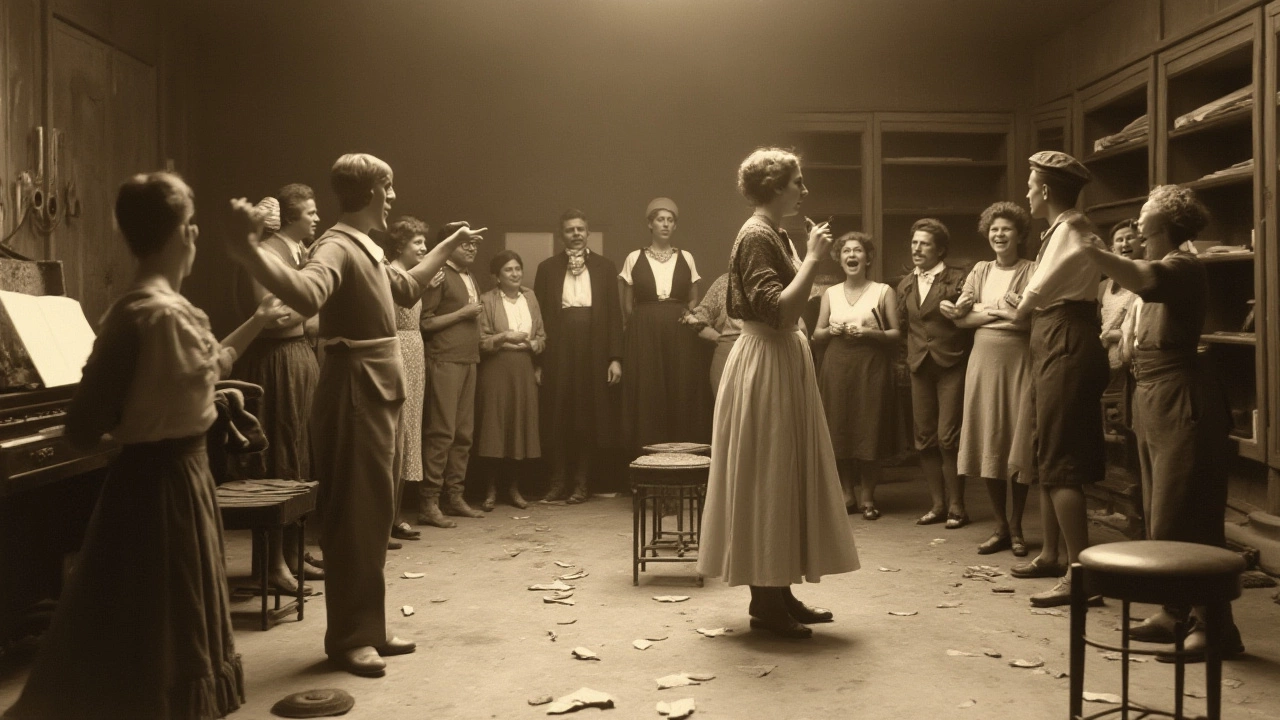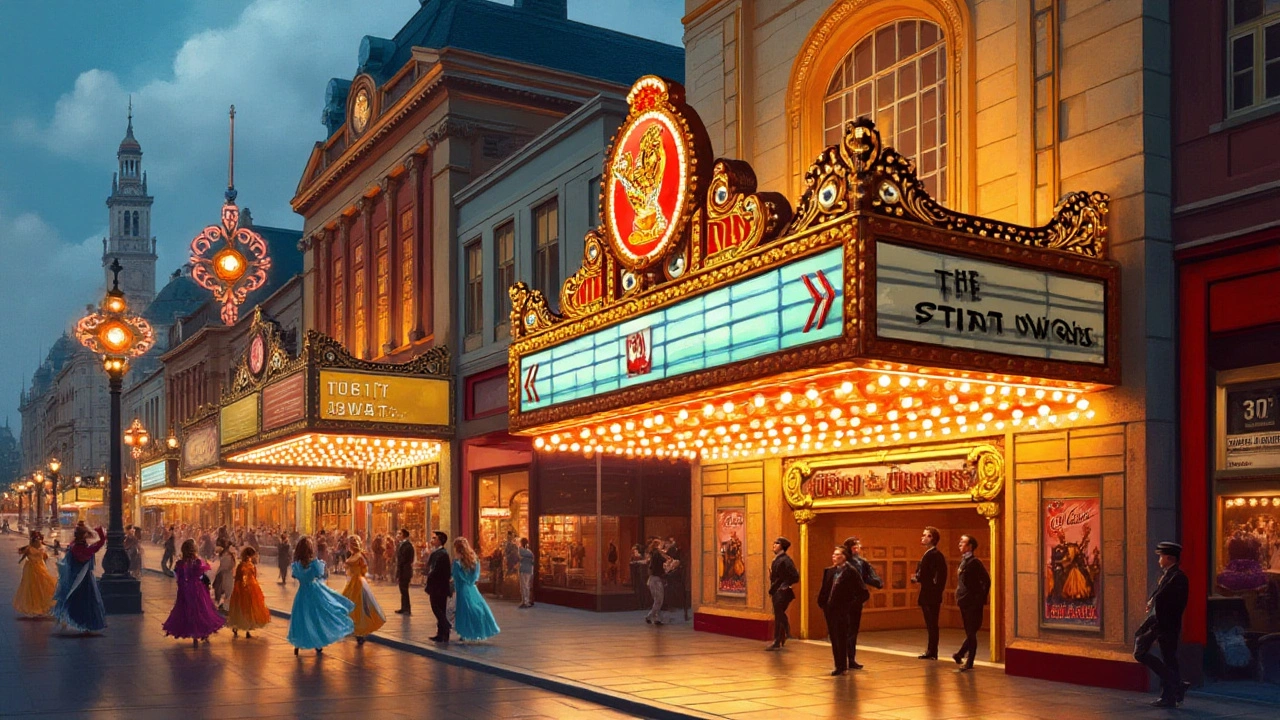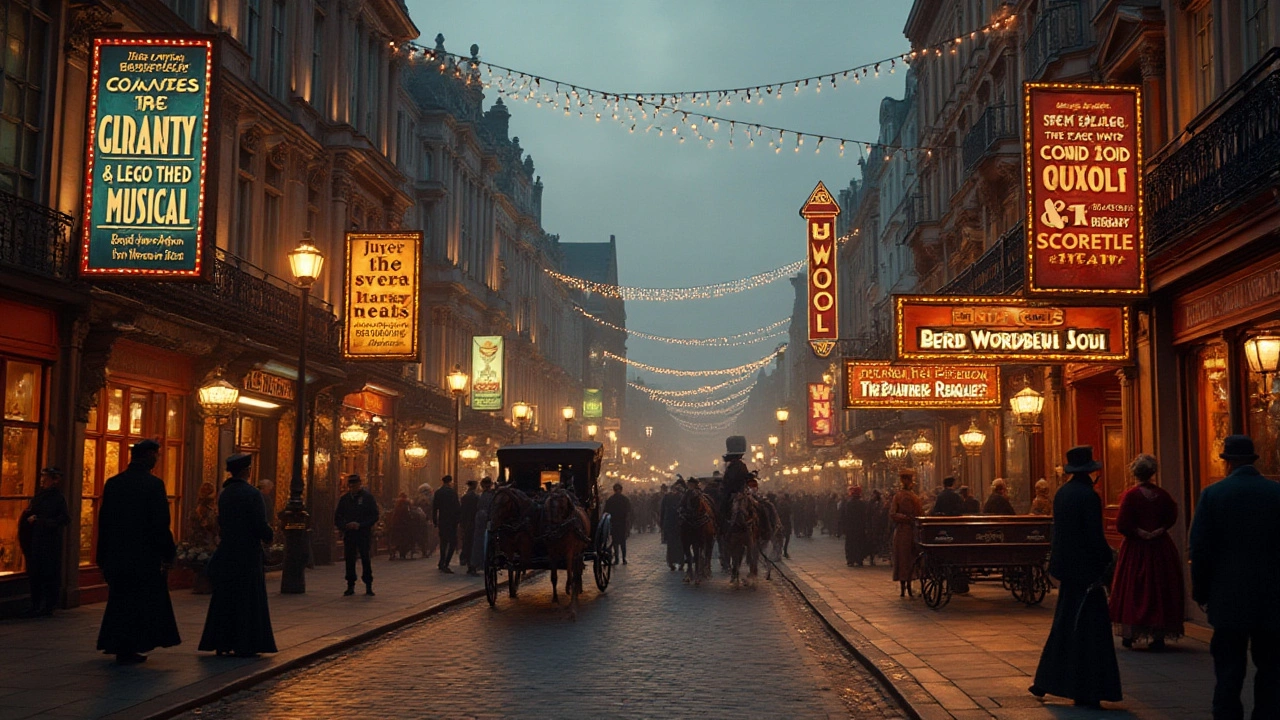Musical theater, a genre that seamlessly weaves together song, dialogue, and dance, has captured the imagination of audiences for centuries. While contemporary musicals continue to thrive and evolve, their roots trace back to fascinating and diverse origins. Understanding where these glittering productions began is a journey into history, marked by cultural shifts and innovative storytelling.
The inception of musicals did not occur overnight but was a gradual evolution across different regions and eras. From the lyrical storytelling found in ancient Greece to the vibrant operettas of Europe, each stage of development contributed to the rich tapestry of modern musical theater. This exploration into the past lifts the curtain on the stories and personalities that pioneered this beloved art form, offering insights into how musicals have become cultural mainstays in entertainment worldwide.
- Early Beginnings of Music and Theater
- Influential Figures in Early Musicals
- Notable Productions and Their Impact
- Transition to Contemporary Musicals
Early Beginnings of Music and Theater
When pondering the origins of musical theater, it is worthwhile to look back at ancient civilizations where music and dramatic storytelling first intersected. The roots can be traced as far as ancient Greece, around the 6th century BCE, when drama and music began to intertwine. In Greek theater, music was not merely ornamental; it played a crucial role in the storytelling process. Choruses, a staple of Greek plays, sang lyrical passages that enhanced the narrative. These productions combined poetic dialogue, choral song, and dance—elements that form a foundation for what we now recognize as musicals. Prominent playwrights like Aeschylus, Sophocles, and Euripides utilized music and rhythm to captivate audiences, setting the stage for future generations.
Progressing through history, the Romans embraced and expanded upon these Greek traditions. Roman theater was marked by its grandiose nature, incorporating music more thoroughly into its comedy and tragedy performances. Musicians and actors acquired a prominent role, with popular plays often hiring star performers to attract larger audiences. Despite the cultural and artistic innovations during this period, the integration of music and theater saw a decline with the fall of the Roman Empire, leading to a hiatus during the early Middle Ages.
Yet, the spark of musical expression wasn't completely extinguished. During the medieval period, church liturgies began to incorporate musical storytelling. These early religious plays, often performed during significant church feasts, combined hymns and chants in narrative forms, a precursor to modern musicals' blend of song and storytelling. The secular world, too, witnessed the growth of musical narrative in forms like the troubadours and minstrels—who toured and shared stories through songs, vividly reflecting the social and cultural mores of their time.
As Europe transitioned into the Renaissance, musical and theatrical forms began to flourish again. Italy led the way with the invention of opera in the late 16th century, a distinct genre that married drama and music into a single performance art. This was a crucial development in the history of musicals, as operas were possibly the closest relative to what we now identify as musical theater. These performances were often composed in a way that showcased the virtuosity of singers and the emotive potential of music, laying down a blueprint for future musical productions.
"Music and rhythm find their way into the secret places of the soul," Plato once remarked, recognizing the intrinsic power of music that these theatrical forms tapped into from the very start.
Meanwhile, in Elizabethan England, the seeds of musical theater were also being sown. Shakespeare's plays, for instance, often included musical elements with songs written into the scripts of tragedies and comedies alike, offering moments of relief and musical contrast. This playfulness with music and theater persisted into the Restoration era, as comedic operas and ballad operas began to emerge as popular entertainment. Early examples from this period helped solidify public appreciation for works that could marry storytelling and song, paving the way for more ambitious works in the following centuries.

Influential Figures in Early Musicals
Delving into the rich history of musical theater, one cannot overlook the pivotal contributions of influential figures who left indelible marks on this dynamic medium. One such figure is John Gay, whose satirical work, "The Beggar's Opera," premiered in 1728 and is often credited with laying the groundwork for modern musicals. Gay's audacious use of popular tunes of the day, paired with biting social commentary, challenged the conventions of Italian opera, which dominated London’s theatrical landscape at the time. "The Beggar's Opera" was not only a commercial success but also a precursor to what would later be recognized as the blend of spoken dialogue and music that defines musicals. Gay’s work heralded a new way of theater storytelling, using music as a tool to enhance the narrative rather than just add to the entertainment value.
This era also saw contributions from Jacques Offenbach, whose operettas were composed in the mid-19th century and served as significant blueprints for the comic and light-hearted elements of early musicals. With productions like "Orpheus in the Underworld," Offenbach's work infused wit and cheeky satire into his portrayals of mythological tales, effectively expanding the scope and appeal of musical theater beyond grandiose and serious narratives. His ability to craft engaging stories underscored by joyous and melodic compositions helped shape the genre’s evolution into one that could oscillate seamlessly between drama and comedy.
In the realm of American musical beginnings, George M. Cohan emerged as a trailblazer. A performer, playwright, composer, and producer, Cohan’s versatility and prolific output in the early 20th century earned him the title "The Man Who Owned Broadway." His productions, like "Little Johnny Jones," were characterized by fast-paced dialogue and catchy, rhythmic music, setting a standard for musicals with patriotic and vaudevillian features. Cohan's efforts helped to solidify the **musical theater history** in America, paving the way for Broadway's Golden Age.
Florenz Ziegfeld, another titan in the world of **early musicals**, revolutionized theatrical presentations with his series of elaborate revues known as "The Ziegfeld Follies." These shows were famed for their lavish sets, ornate costumes, and the inclusion of top musical talent, creating a type of spectacle that captivated audiences and influenced countless productions thereafter. Ziegfeld's legacy is entrenched in the grandeur and opulence he brought to stage productions, a hallmark of musicals that persists even today.
"Musicals allow us to process the painful, joyful, inexplicable action of our lives on Earth with more feeling and heart than mere language can muster," mused renowned critic Laurence Maslon, capturing the essence of these early pioneers’ contributions.
These figures, among others, were instrumental in the journey of **musical theater** from a niche entertainment form to a significant cultural force. Their innovative creativity and unwavering dedication to the craft laid the foundation upon which today's musicals continue to build, ensuring that this dynamic art form remains vibrant and ever-evolving.

Notable Productions and Their Impact
The evolution of musical theater has been marked by a series of bold and innovative productions that have left an indelible mark on the arts. One of the earliest landmark productions was 'The Black Crook', which premiered in New York City in 1866. This was considered the first piece to combine dance and original music in a play, creating a synthesized form of entertainment that resembled the musicals we know today. 'The Black Crook' was a spectacle with high production values, including elaborate set designs and a barrage of captivating numbers. It set a precedent for large-scale productions and demonstrated the potential for musicals to be both commercially and artistically successful.
Following this, in the early 20th century, shows like 'Show Boat' and 'Oklahoma!' pushed the boundaries of traditional theater by incorporating complex narratives and addressing social issues. 'Show Boat', debuting in 1927, marked a pivotal moment by tackling themes of racial prejudice and miscegenation—a daring move at the time. Meanwhile, 'Oklahoma!', which premiered in 1943, revolutionized theater by integrating its songs and dances into the storyline, resulting in a more cohesive and engaging production. This integration became a template for modern musicals and influenced countless productions thereafter.
In the mid to late 20th century, the rise of influential figures such as Rodgers and Hammerstein, Stephen Sondheim, and Andrew Lloyd Webber further propelled musical theater into new realms. Each of these creators injected their unique style and storytelling prowess into their works, making them not only commercially viable but also profoundly impactful. For example, Stephen Sondheim's 'Sweeney Todd' introduced a gritty, Gothic tone to musical theater, expanding the range of emotional and thematic content traditionally expected in musicals.
"Musicals shy away from real drama, they tend to focus on optimism. But we wanted to bring depth," Sondheim once remarked, highlighting his dedication to pushing the limits of the genre.
The global phenomenon 'Les Misérables' introduced many audiences to a new form of emotionally charged storytelling with its compelling characters and dramatic score, based on Victor Hugo's literary masterpiece. This production was a testament to musical theater's ability to adapt classic literature into powerful dramatic renditions. Similarly, Andrew Lloyd Webber's 'The Phantom of the Opera' captivated audiences with its lush musical compositions and gripping gothic romance, becoming one of the longest-running productions in Broadway history.
In parallel to these classical foundations, modern productions like 'Hamilton' have redefined what a first musical can achieve in the present day. Lin-Manuel Miranda's ingenious blend of hip-hop, traditional show tunes, and historical narrative innovated the way stories are told on stage. 'Hamilton' became a phenomenon not just for its groundbreaking style but also for how it engaged with historical narratives, making them accessible and relatable to contemporary audiences. Thus, the impact of these productions is clear: they have expanded the scope and ambition of musical theater, integrating diverse artistic elements and tackling dynamic narratives that continue to resonate powerfully within popular culture.

Transition to Contemporary Musicals
The journey from the earliest musicals to the wide array of modern-day hits is as fascinating as the performances themselves. As we delve into the evolution from historic operettas and vaudeville shows to today’s dazzling Broadway spectacles, we find a narrative rich with cultural shifts and artistic ambition. It was during the early 20th century that musicals began to morph into a distinct form of storytelling, marked by the innovative integration of rich narratives, elaborate choreography, and memorable scores.
The golden age of musicals saw the rise of legendary figures like Rodgers and Hammerstein, who crafted masterpieces that have firmly implanted themselves into the cultural ethos. Their work exemplified how musicals could tackle complex social themes while still enchanting audiences with spectacular music. Their influence heralded a new age of productions that didn't shy away from tackling real-world issues within their narratives. A prime example would be their seminal work, 'Oklahoma!' which not only refreshed theatrical storytelling but defined the form of the modern musical.
"Musicals have the capability of being the great American art form because they can encompass so much - they can tell any story." – Stephen Sondheim
Entering the late 20th and early 21st centuries, contemporary musicals began pushing artistic boundaries and experimenting with various storytelling techniques. Iconic creators like Andrew Lloyd Webber and Stephen Sondheim innovated with both music and dramatic structure, offering a diverse range of experiences from the operatic grandeur of 'The Phantom of the Opera' to the deeply personal and introspective 'Into the Woods.' These productions have expanded the thematic landscape of musicals, embracing daring narratives and diverse musical styles.Contemporary musicals are often noted for their combination of traditional stage methods with modern technology, creating a multi-sensory experience. The use of elaborate projections and digital effects has become commonplace, enhancing the spectacle and immersing audiences deeper into crafted worlds. Recent hits, such as 'Hamilton', have demonstrated how historical subjects can be presented with a modern flair that resonates deeply with present-day audiences, blending hip-hop music with classic theater elements.
Moreover, the rise of jukebox musicals like 'Mamma Mia!' and 'Jersey Boys', which weave existing popular music into their narratives, shows the versatility of the genre and its incredible adaptability. This modern style of musicals speaks to the universal appeal of music itself, proving once again that great songs and stories remain eternally intertwined. As musical theater continues to evolve, it remains an ever-dynamic platform for storytelling, ever engaged with its audience and ever echoing the times in which we live. And so, the transition to contemporary musicals reveals an enduring journey, one that honors its storied past while continually reinventing itself for the future.

